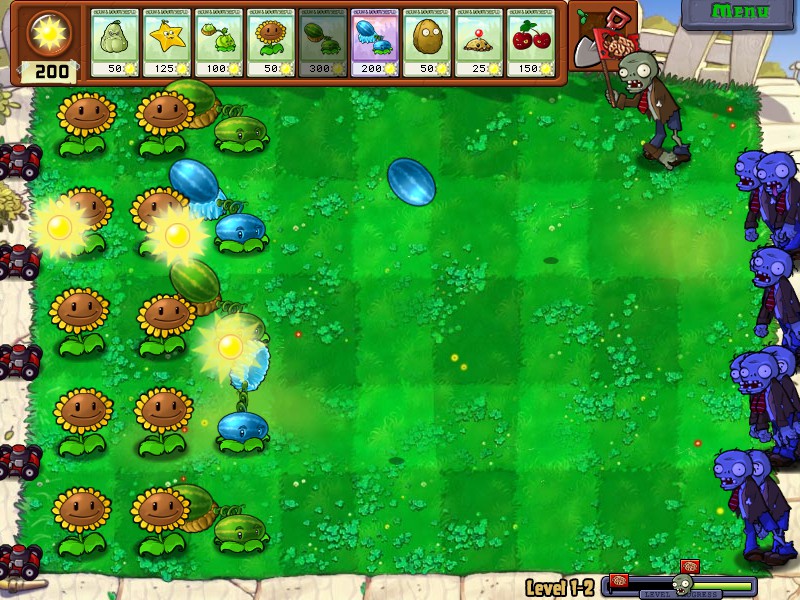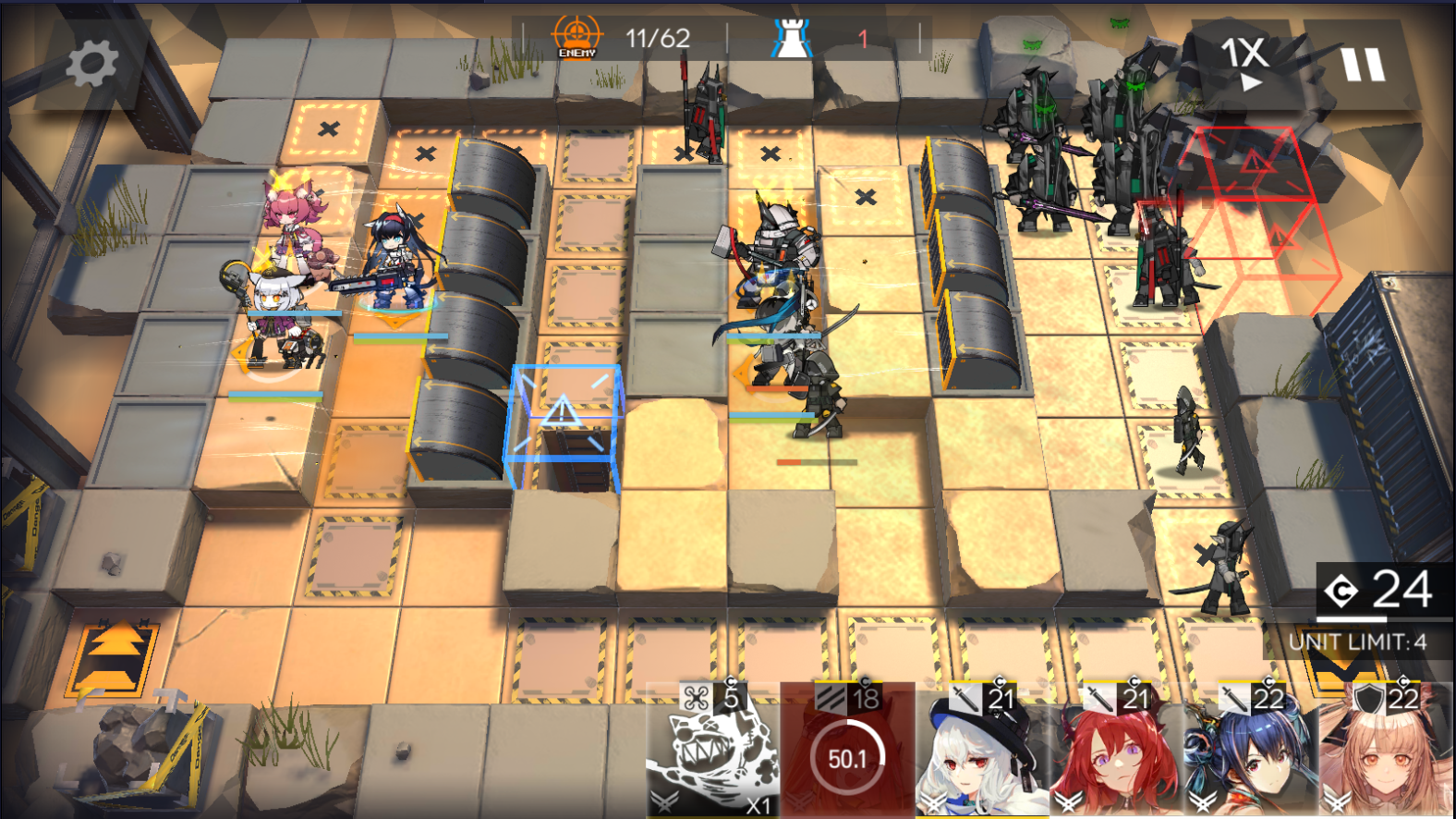I played two Tower Defense games: Plants vs Zombies and Arknights. The former is a single-player game developed by PopCap Games and published in 2009, and the latter is a gacha game developed by Hypergryph and published in 2019.
Plants vs Zombies
In Plants vs Zombies, the objective is to defend the lawn from zombies by planting plants, which can block and fend off zombies. Plants cost sun, which can be collected periodically in daytime levels, but during nighttime levels, sun can only be generated by sun-generating plants such as sunflowers.
The theme of Plants vs Zombies is very straightforward: zombies are bad because they eat human brains, and for some reason, they want the player’s brain, so the player needs to assemble plants to fend off the zombies to prevent their brain from being eaten. This theme has a lot of fantasy elements, and such elements can be found in some designs of the game.
- Visual design. Both the designs of plants and zombies are cartoonish, with plants being cartoonishly adorable and zombies being cartoonishly scary. These visual designs contribute to the relatively relaxing and casual gaming experience.
- Ability design. All plants’ abilities are supernatural, which makes the world imaginatively appealing. Likewise, the perks of different types of zombies also show the attractiveness of this fantasy world. These contribute to an immersive fantasy game experience.
The fun of the game mainly consists of fun from challenge and fantasy. The theme contributes a lot to the fantasy aspect of the fun, and with such world settings in place, the levels are designed so that they are challenging to an extent but still ensure a relaxing and pleasant experience.
Arknights

In Arknights, the player deploys operators on the map to kill enemy units and stop them from entering the blue box. Since the game is a gacha game that has a collection mechanism, the operators the player would use in levels are characters they draw from the gacha pools. There are over 100 different characters, each belonging to one of eight subclasses: guard, defender, caster, sniper, specialist, medic, supporter, and vanguard. Each of these subclasses has different functionalities in gameplay.
The theme of Arknights, compared to that of Plants vs Zombies, is darker and more complicated. The player, as one of the tops of a pharmaceutical company, needs to protect the peace by battling with an uprising force of the infected. The infected are people who catch a disease named oripathy, and they are looked down on by the general society. This overall theme affects various aspects of the game.
- Story. The world in Arknights is big, and the main storyline encompasses stories of different organizations. The levels are battles between organizations, and they serve as the transitions between story events in gameplay. This kind of storytelling structure allows for a combination of an immersive narrative experience and a challenging Tower Defense experience.
- Mechanics and level design. Unlike Plants vs Zombies, where levels are structured quite similarly, Arknights‘ levels are usually quite different from one another. This is mainly due to the map is changing every level, so enemy-spawning locations and places where operators can be deployed change. Enemy pathing, hazardous environment, and various enemy gimmicks (exploding, AOE attack, disabling attack, etc) add to the complicacy of the levels a lot. These designs are in line with the heavy theme of the game because the player is fighting a well-armed organization in different locations, as told in the story, and they contribute a lot to the challenging and narrative experience of the game.
The fun of the game is mainly challenge, fantasy, and narrative. Compared to Plants vs Zombies, Arknights stress a lot more on challenge and narrative by making difficult levels and compelling stories.


